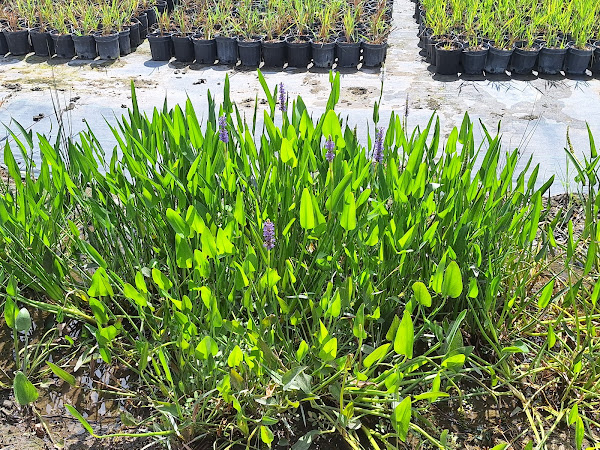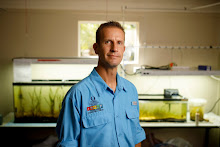Vallisneria americana

Not Vallisneria americana

Some of the other scientists I was with helped identify the not-Vallisneria as Strap-Leaf Sagittaria, Sagittaria kurziana. https://plant-directory.ifas.ufl.edu/plant-directory/sagittaria-kurziana/
Strap-Leaf Sagittaria forms underwater meadows in clear rivers and streams in other parts of Florida, but none of us had heard of it occurring in the Caloosahatchee Estuary previously. The single shoot we saw likely grew from a seed washed down from somewhere upriver. The Caloosahatchee receives water not only from its own watershed, but also through a canal that links its headwaters to Lake Okeechobee. So anything in the Lake Okeechobee watershed (including bad things like pollution as well as nice things like native plant seeds) can potentially wash down into the estuary. If you look back at 1960s reports about what water plants were common in the upper Caloosahatchee Estuary, it wasn’t just Tape Grass and Widgeon Grass (Ruppia maritima) like it is now. There’s also mention of another seagrass-like underwater plant, Sago Pondweed (Stuckenia pectinata), plus native floating Water Lettuce (Pistia stratiotes) and non-native floating Water Hyacinth (Pontederia crassipes). The floating plants disappeared because of aggressive programs to eliminate them through herbicide spraying, and the rooted plants (including most of the Vallisneria americana) probably disappeared because of water management changes that caused the normally-fresh parts of the estuary to get too salty. Grazers may have also played a role in the declines- in addition to native manatees and freshwater turtles, Florida has acquired some non-native grazing fishes (Tilapia and kin) and snails since the 1950s, and those increase pressure on plants. Even now that environmentalists have successfully lobbied to change water management policies to keep the upper estuary more fresh, the plants aren’t coming back very well by themselves. We think that poor water clarity and disproportionately heavy grazing on the few plants left is preventing recovery, so restoration efforts are focused on improving water quality and using some temporary cages and fenced areas to give the plants a better foothold against grazers. It’s possible that herbicides washing down from aquatic plant spraying elsewhere in the watershed are also stressing plants.
Anyway, when I got home and dried off I looked up Strap-Leaf Sagittaria to learn more about it. I associate the genus Sagittaria with the common name “Arrowhead” – a group of wetland plants that live mostly *above* the water and have tall stalks with white flowers. Lanceleaf Arrowhead, Sagittaria lancifolia, aka Duck Potato, is the common one I see in ditches and wetlands around here.
This Sagittaria lancifolia was growing in the dry detention pond near my office building until they mowed it. I keep trying unsuccessfully to get our campus grounds department to stop mowing the dry detention ponds, so these kinds of plants can grow and create a legitimate wetland ecosystem.

When I looked up genus Sagittaria on the Florida Plant Atlas I found 13 species in the genus can be found in Florida, though a couple of those are non-native.
https://florida.plantatlas.usf.edu/plant/results?KeywordSearch=sagittaria&KeywordCategory=Sci_Name
Strap-Leaf Sagittaria is not the only member the genus that deviates from the classic shape and lifestyle of Lanceleaf Arrowhead. There’s also Quillwort Arrowhead, Sagittaria isoetiformis, which is tiny and low to the ground with tubular threadlike blades. And there’s Threadleaf Arrowhead, Sagittaria filiformis, which has leaves like small lily pads when growing in still water, but morphs to seagrass-like blades if growing in flowing water. https://fsus.ncbg.unc.edu/main.php?pg=show-taxon.php&plantname=sagittaria+filiformis This recent experience with Sagittaria is not the first time I have had my mind blown learning about a plant genus containing species with wildly divergent forms and lifestyles. My first time was with Primrose Willows, genus Ludwigia.
https://florida.plantatlas.usf.edu/plant/results?KeywordSearch=ludwigia&KeywordCategory=Sci_Name
There about 30 species of Ludwigia in Florida, including native and non-native species, and they have an absolutely bonkers diversity of forms and lifestyles. The only commonalities seems to be that they mostly live in wet habitats, mostly have four- or five-petaled yellow flowers, and have some reddish highlights on their leaves and stems. Some of them like Mexican Primrose Willow, Ludwigia octovalvis are tall, woody bushes (hence “willow” in their common name).
 By Tauʻolunga - Own work, CC BY-SA 3.0, https://commons.wikimedia.org/w/index.php?curid=2342775
By Tauʻolunga - Own work, CC BY-SA 3.0, https://commons.wikimedia.org/w/index.php?curid=2342775
Others like Creeping Primrose Willow Ludwigia repens are almost totally aquatic and are sold as aquarium plants, as described by this enthusiastic freshwater aquarium hobbyist.
While it’s a beautiful miracle of nature that there are so many species and forms within these aquatic plant genera, it can create problems when humans get involved. For example, the bush-like forms of Ludwigia in Florida include both native species and non-native ones, and aquatic plant managers tend to treat them the same. I.e., they lump them into one category and poison them all. On the National Pollutant Discharge Elimination System (NPDES) reports that the Florida Fish and Wildlife Conservation Commission’s Aquatic Plant Management group (FWC APM) has to file with the US Environmental Protection Agency, they list Ludwigia peruviana / octovalvis as one thing, even though L. octovalvis is native and L. peruviana is not. It’s not the worst lumping that FWC APM does, though. The worst is lumping all floating aquatic plants together, persecuting native Water Lettuce right along with non-native Water Hyacinth.
Hey, as long as we’re talking about Water Hyacinth, Pontederia crassipes, we should mention that Pontederia is ALSO one of those crazy genera that has species with different forms, different lifestyles, and different native / non-native status in Florida. Indeed, the much-reviled, free-floating Water Hyacinth, Pontederia crassipes is in the same genus as beloved, native, rooted-in-the-ground Pickerelweed, Pontederia cordata. Ain’t that something?
Hated Pontederia crassipes.
 By Wouter Hagens - Own work, Public Domain, https://commons.wikimedia.org/w/index.php?curid=1864500
By Wouter Hagens - Own work, Public Domain, https://commons.wikimedia.org/w/index.php?curid=1864500
Beloved Pontederia cordata at the Natives of Corkscrew Nursery in Fort Myers, Florida.

